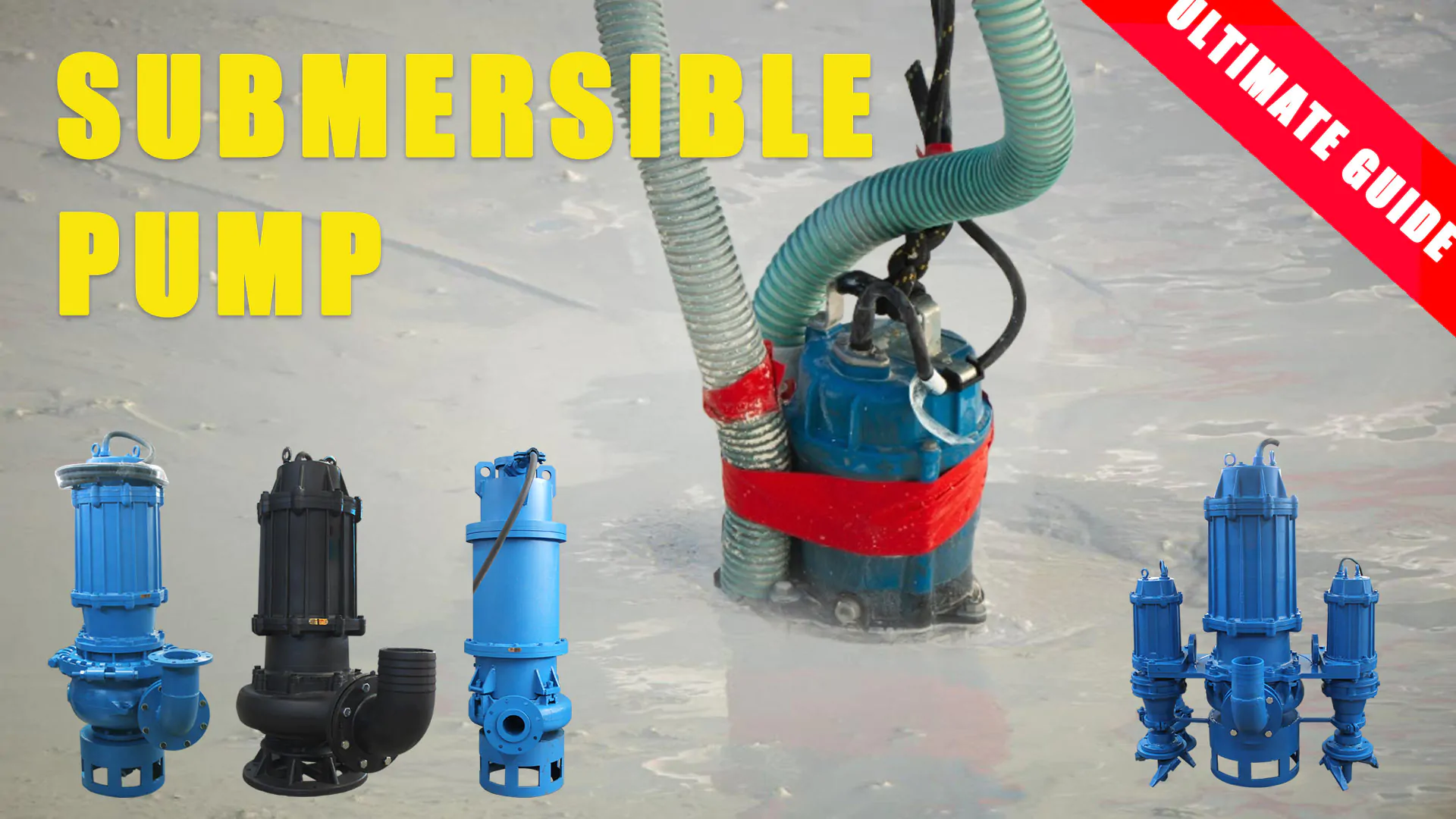The Ultimate Guide to Sludge Pumps: Types, Applications, and How They Work
When it comes to handling thick, semi-solid waste in industrial and municipal settings, nothing gets the job done quite like a sludge pump. Designed to move viscous fluids that contain a high concentration of solids, these pumps are essential tools in sectors ranging from wastewater treatment to mining and construction.
In this comprehensive guide, we’ll dive deep into everything you need to know about sludge pumps:
- What is a sludge pump?
- Types of submersible and heavy-duty sludge pumps
- How to use and maintain them
- The differences between sludge pumps and trash pumps
- Where to find sludge pumps for sale or rental services
- And how sludge pumps complement related systems like filter presses and slurry pumps
We’ll also provide 10 outbound resources to help you choose, operate, and understand these powerful machines.
What Is a Sludge Pump?
A sludge pump is a specially designed type of water pump that transfers viscous fluids containing a high solid content, known as sludge. Sludge can be raw sewage, chemical waste, biological residues, or any semi-solid mixture that’s too thick or abrasive for standard pumps.
Sludge is typically generated from:
- Wastewater treatment plants
- Mining operations
- Oil and gas refineries
- Food processing facilities
Learn more about sludge characteristics from USGS and EPA.
How Does a Sludge Pump Work?
Sludge pumps rely on centrifugal force or positive displacement to generate pressure and move dense, viscous fluids. Here’s a simplified overview:
- Suction: The pump draws sludge into its casing.
- Rotation: An impeller or diaphragm creates movement using kinetic energy.
- Discharge: The pressurized sludge exits through the outlet pipe, often heading to further treatment or dewatering processes.
Sludge pumps are built with abrasion-resistant materials and wider passages to avoid clogging and withstand tough conditions.
Types of Sludge Pumps
1. Submersible Sludge Pump
A submersible sludge pump is placed directly in the sludge, typically in pits or tanks. These are fully sealed units designed to operate while submerged.
- Best for deep locations and confined spaces
- Easy to install and maintain
- Often used in construction sites, basements, and wastewater treatment tanks
- Common brands: Tsurumi Pumps, Zoeller
2. Centrifugal Sludge Pump
This pump uses a high-speed rotating impeller to create centrifugal force, pushing sludge outward to the discharge.
- Handles moderate to thick sludge
- Common in municipal wastewater systems
- Works well with filter presses for sludge dewatering
3. Positive Displacement Pump
Instead of relying on rotation, these pumps trap and move a fixed volume of sludge per cycle.
- Ideal for highly viscous or sensitive materials
- More precise flow control
- Brands include Verder and SEEPEX
4. Heavy Duty Sludge Pump
These are built for harsh environments like mining or drilling operations.
- High power motors
- Resistant to corrosion and abrasion
- Used where conventional sludge pumps fail
- Learn more from Atlas Copco’s dewatering solutions
Sludge Pump vs Trash Pump: What’s the Difference?
Sludge pumps and trash pumps are sometimes used interchangeably, but they’re built for different tasks.
| Feature | Sludge Pump | Trash Pump |
|---|---|---|
| Fluid Type | High-viscosity sludge | Water with debris |
| Solids Handling | Yes (dense solids) | Yes (but lighter solids) |
| Abrasion Resistance | Very high | Moderate |
| Applications | Wastewater, mining, drilling | Flood control, site dewatering |
If you’re unsure which to choose, check out this comparison guide by Pump Solutions Australasia.
Sludge Pump Applications
Sludge pumps are indispensable in:
- Wastewater treatment: Moving raw sludge to dewatering units like belt filter presses
- Mining: Handling tailings and heavy slurry
- Oil and gas: Drilling mud transport
- Construction: Removing silt and mud from job sites
- Food processing: Handling organic waste or by-products
For example, in mining, sludge pumps often work in tandem with slurry pumps for complete solids handling solutions.
Where to Find Sludge Pumps for Sale
If you’re looking to buy, consider these platforms:
Prices can range from $500 to over $10,000, depending on size, motor power, material, and brand.
Sludge Pump Rental: When You Need Temporary Power
For temporary projects or emergencies, sludge pump rental is a cost-effective alternative.
You can rent from:
Benefits of Renting:
- No long-term commitment
- Lower upfront cost
- On-demand support
- Perfect for short-term sludge removal, flood mitigation, or pipeline flushing
How to Use a Sludge Pump (Step-by-Step)
- Assess your site conditions: Know the depth, viscosity, and volume of sludge.
- Choose the right pump: Select a submersible, centrifugal, or heavy-duty model based on the task.
- Install properly:
- Ensure stable positioning for submersible models
- Attach correct piping and fittings
- Connect power or fuel source
- Prime the pump (if needed): Some pumps require manual priming.
- Monitor operation: Watch flow rate, pressure, and vibration levels.
- Shut down and clean after use.
Maintenance Tips for Sludge Pumps
- Inspect impellers and seals regularly
- Flush out pump after each use to avoid clogging
- Replace worn liners or diaphragms as needed
- Lubricate bearings per manufacturer’s schedule
- Keep records of maintenance and performance
A well-maintained heavy-duty sludge pump can last 10–15 years or longer.
FAQs
What is the difference between a sludge pump and a trash pump?
Sludge pumps handle viscous, high-solid mixtures; trash pumps are better suited for water with debris like leaves or gravel.
How does a sludge pump work?
It uses centrifugal or positive displacement force to move thick sludge through piping systems.
How do you use a sludge pump?
By properly installing, priming (if required), monitoring flow, and cleaning it after use.
What is a submersible sludge pump?
A sealed pump that operates underwater, ideal for pits or tanks where sludge collects.
Sludge Pump in Unusual Places: From Minecraft to Deep Rock Galactic
Interestingly, the term sludge pump has also popped up in pop culture. In the video game Deep Rock Galactic, the “Sludge Pump” is a powerful weapon used by Drillers. It’s not exactly a wastewater tool, but a fun homage to real-life equipment. Similarly, players often ask “how to pump out sludge in Minecraft?”—another gamified take on real-world engineering.
While these uses are fictional, they reflect how integral such machinery has become in everyday awareness.
Additional Resources and Learning
- Pump Selection Guide – Crane Engineering
- Sludge Dewatering Techniques – Lenntech
- Pumps & Systems Magazine
- CDC Wastewater Treatment Guide
- EPA Guide to Biosolids
- Grundfos Sludge Pump Products
- Fluid Handling Equipment Insights – Motion Industries
- Pump Affinity Laws – Engineering Toolbox
- Tsurumi Pump Technical Library
- Seepex Progressive Cavity Pumps
Final Thoughts
Sludge pumps are critical to modern infrastructure. Whether you’re treating industrial waste, dredging silt, or handling biological sludge, these pumps are built to go where other machines can’t. Understanding the difference between a sludge pump, a trash pump, and a slurry pump helps ensure optimal performance and cost-efficiency.
Paired with technologies like filter presses and dewatering belts, they form a complete sludge handling system—capable of tackling even the most challenging material flows.
Internal Links Included:
External Backlinks Included:
- USGS, EPA, Pumps & Systems, CDC, Engineering Toolbox, and more (10 total)


